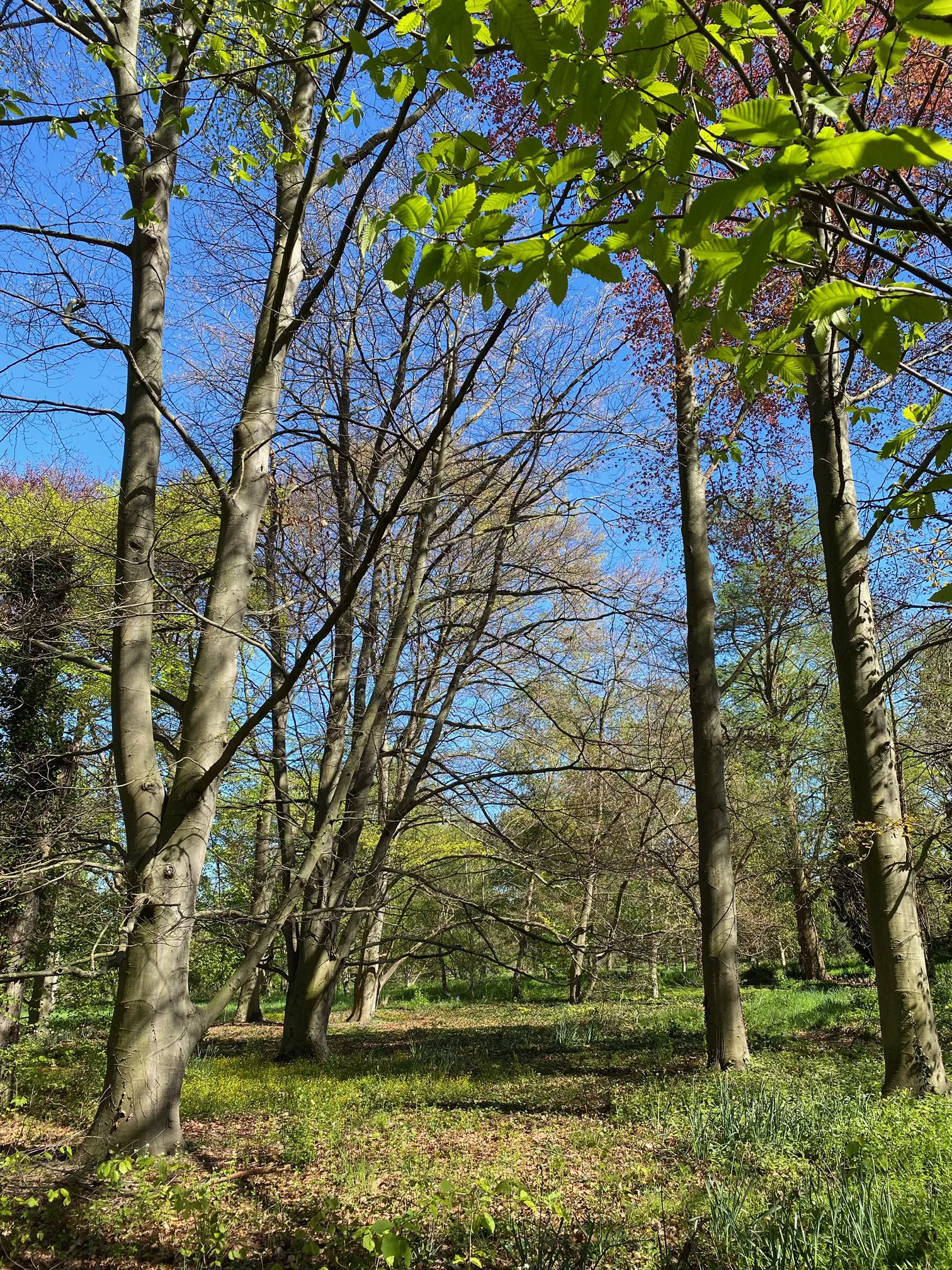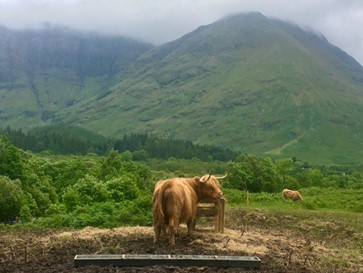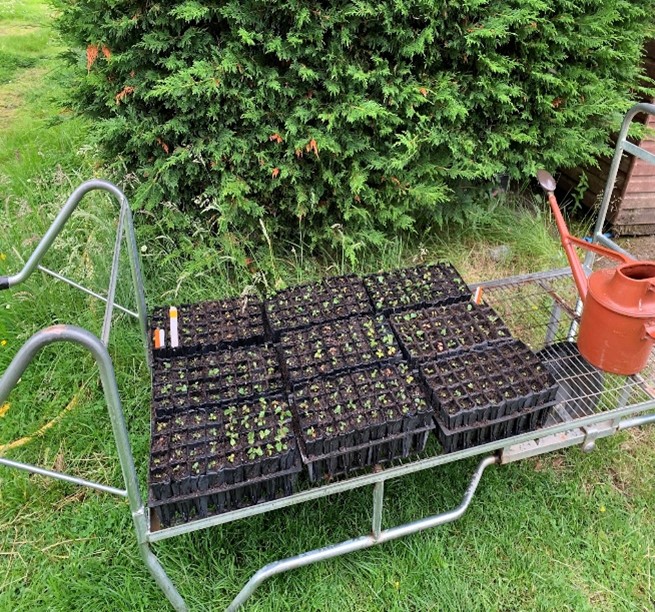by Cristin Middlebrooks, AWC Antwerp
 I grew up in the Pacific Northwest, just a few miles west of Portland, Oregon, which, in my mind, is the most beautiful place in the world. Every summer we’d head east, driving past massive waterfalls, through mountain ranges and along the majestic Columbia River Gorge to visit my grandmother. Other times there were day trips to Cannon Beach, an hour west, dipping our toes in the freezing Pacific Ocean, and roasting marshmallows by a campfire while sitting on logs carried in by the tides. There’s so much to love about this area, but it’s the forests that make it magical.
I grew up in the Pacific Northwest, just a few miles west of Portland, Oregon, which, in my mind, is the most beautiful place in the world. Every summer we’d head east, driving past massive waterfalls, through mountain ranges and along the majestic Columbia River Gorge to visit my grandmother. Other times there were day trips to Cannon Beach, an hour west, dipping our toes in the freezing Pacific Ocean, and roasting marshmallows by a campfire while sitting on logs carried in by the tides. There’s so much to love about this area, but it’s the forests that make it magical.
The Pacific Northwest is home to more than 24 million acres of forests. Douglas firs, hemlocks and red cedars are all native to the region and dominate the landscape. My local favorite has always been the Pacific madrone with its orange-red bark and large, dark green leaves. Sadly, the madrones are becoming more and more difficult to find. They prefer cool, damp climates, and the climate of the Northwest, long known for lots of rain and cool temperatures, is becoming drier and much warmer.
Unfortunately, that’s a trend occurring all over the planet. Forests that once covered the land, and the habitats that rely on them, are dwindling.
Shortly after the last ice age, more than 10,000 years ago, lush dense forests covered 57 percent of all habitable land on Earth. However, once humans began clearing forests to grow crops, their need for more land became insatiable. According to an article in Our World in Data, this demand means “we’ve lost one-third of global forests – an area twice the size of the United States. Half of this loss occurred in the last century alone.”
 The future of our forests is bleak, but not hopeless. The sustainability of our forests has always been important to me. So when I heard about this year’s FAWCO Youth Cultural Volunteers Program and the involvement with Trees for Life, an organization dedicated to restoring the forests of the Scottish Highlands with a longstanding connection to FAWCO, I had to learn more.
The future of our forests is bleak, but not hopeless. The sustainability of our forests has always been important to me. So when I heard about this year’s FAWCO Youth Cultural Volunteers Program and the involvement with Trees for Life, an organization dedicated to restoring the forests of the Scottish Highlands with a longstanding connection to FAWCO, I had to learn more.
For more than 10 years, the FAWCO Youth Program has been working with children from ages 5 to 25 to promote cultural understanding and raise awareness of global issues. A key part of building this awareness is with week-long volunteer programs. Past programs include working at a traditional Swiss farm, visiting organizations that help street children in Mumbai, and cleaning up canals in Amsterdam.
This year, the American Women’s Club of Scotland hosted 12 teens, ages 13–17, from Europe and the United States. They participated in a beach clean in North Berwick, took a tour of the animal conservation and endangered breeding program at the Highland Wildlife Park and discovered how the Festival Theatre in Edinburgh modifies its performances.
For the purposes of this article, however, I would like to focus on the time they spent with Trees for Life’s activities in the northwestern region of Scotland.
 This forest once covered more than 1.5 million hectares, roughly the size of the state of Connecticut. Majestic Scots pine, birch, juniper and aspen trees provided homes for thousands of species, including beavers, wolves, wild boars and lynxes.
This forest once covered more than 1.5 million hectares, roughly the size of the state of Connecticut. Majestic Scots pine, birch, juniper and aspen trees provided homes for thousands of species, including beavers, wolves, wild boars and lynxes.
Now the Caledonian Forest is threatened with extinction, reduced to 18,000 hectares. Some of its decline was natural. For instance, when the climate became wetter around 6,000 years ago, peat bogs began to form, causing some of the forest to disappear. However, the impact of humans had a much more devastating effect. Trees were used for fuel, buildings, and ships. Forests were also cleared for farming. No longer one mighty forest, the current Caledonian Forest can now be found clumped in groups throughout the Scottish Highlands.
However, there are plans afoot to “rewild” this ancient forest. Volunteers are hard at work researching and planting native species, protecting them from overgrazing by deer and sheep, and removing non-native plants and trees. Trees for Life is one such organization that has planted 2 million native trees since it began in 1989.
Trees for Life founder Alan Watson Featherstone realized that if the land could be left alone, the trees and ecosystem could return. However, the constant grazing of red deer and sheep make it impossible for tree seedlings to develop. So thirty years ago, Featherstone raised money and awareness. He fenced off specific areas of the Highlands, protecting these spots from grazing and giving seedlings a chance to grow. His experiment succeeded.
Not only did the trees begin to grow, but heather, which the deer particularly enjoy, also began to grow. Bluebells began appearing. Caterpillars and beetles returned, which attracted birds who brought berry seeds in their gut that were soon scattered far and wide. Then beavers and wild boars were reintroduced and began to thrive.
These animals are what he called “keystone species that have a disproportionately positive effect on the ecosystem.” Beavers build ponds that attract dragonflies and frogs that in turn attract birds and other animals. Boars stir up the ground creating perfect nursery beds for seedlings. “The whole process gathers momentum like a snowball rolling downhill,” Featherstone said.
 These days Trees for Life goes further, clearing non-native plants and growing native trees from seeds. They nurture the seeds in “tree nurseries” until they are ready to be introduced to the forest. The students of the FAWCO Youth Program actively participated in both of these activities.
These days Trees for Life goes further, clearing non-native plants and growing native trees from seeds. They nurture the seeds in “tree nurseries” until they are ready to be introduced to the forest. The students of the FAWCO Youth Program actively participated in both of these activities.
One afternoon was spent “bracken bashing,” which was a favorite activity for one student I contacted, Asher Dewey. The population of animals who used to eat the bracken has declined, allowing it to take over the landscape. “So now it’s up to humans to prevent bracken from invading,” Dewey said. “I was given a tool, but I found it more efficient to just use my body weight to knock down bracken, so I had some fun stomping it down.” Later, students used the cut bracken to create shelters.
Students spent the next day working with Trees for Life volunteers in the tree nursery located in the Dundreggan Rewilding Centre. Here they specialize in growing aspen, oak and willow trees, rare species that are difficult to find in commercial nurseries.
Trees for Life first gathers seeds from trees grown locally, planting the seeds in special containers that can be reused for more than ten years.
Once growth begins to show, they are transferred to special beds where they will continue to be cared for.
It’s a lengthy process. It may take up to five years to prepare these saplings to be removed to the forest. Once they have been judged strong enough to withstand grazing by sheep and deer, they are ready for their final planting.
The process is long and requires a great deal from the Trees for Life staff and their volunteers. However, you won’t hear much grumbling. The organization is truly dedicated to their cause. They see themselves as “working on a grand scale, aiming to close the gap between people and nature.” It’s essential to keep this love of conservation going with younger generations, which is why collaborating with youth groups like those in the FAWCO Youth Program is so important.
As founder Mr. Featherstone so aptly stated, “Restoration is a statement of hope, and hope is a quality in very short supply in our society today. It’s a labor of love and a gift to future generations.”


Sources:
All photos courtesy of Sheila Doucet, Asher Dewey and Amanda Drollinger
The world has lost one-third of its forest, but an end of deforestation is possible. Our World in Data. Ritchie, H. (2021, February 9).
Restoring the ancient Caledonian Forest Alan Watson Featherstone TEDxFindhorn (Video). Trees for Life, (2016).
Trees for Life (Dundreggan Rewilding Centre)
Additional resources:
FAWCO “Billion Trees Campaign”
FAWCO Grove at Trees for Life
Photo captions, from the top:
A view of the Caledonian Forest from student Asher Dewey.
Asher Dewey bashing the bracken.
Young seeds becoming saplings.
Students weeding the saplings.

